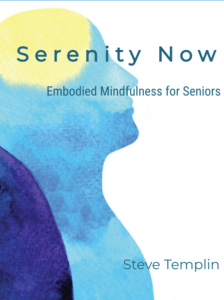This is part 3 of a 3 part post on MindBody Medicine. In the previous posts, we looked at the stress-related nature of most chronic pain and illness and how mindbody approaches to healing differed from conventional methods. In this brief post we’ll explore the neuroscience supporting mindbody medicine.
MindBody Medicine Science
It’s important to know that how we use our attention not only influences brain function but brain growth. We’re taking advantage of the principles of neuroplasticity that inform us that our brain is always changing depending on how we use it.
We’re opting here for positive neuroplasticity. What this means is that as we practice attention skills and develop our ability to turn off the stress response our brain will reflect that change over time.
Initially, as we inhibit the stress response we’re moving energy out of the amygdala (a threat assessment area), into midline structures like the striatum (that provides for a sense of safety) and the thalamus (that gives us a felt sense of being connected to something larger than ourselves), the hippocampus (that helps us to integrate old traumatic experience), and the prefrontal cortex.
When we’re stressed and we feel that we’ve ‘lost it’ we’re most likely commenting on the loss of activation of the middle prefrontal cortex.
Some of the functions of the prefrontal cortex are body regulation via the autonomic nervous system, the ability to connect with others in a heartfelt way and to feel empathy, increased intuition, increased emotional stability and decreased fear.
Initially, our brain will function differently, and over time because of epigenetic gene signaling, our brain will change structurally to reflect and encourage more efficient mindbody functioning.
The key element here is that our brain has an amazing capacity to re-integrate stressful or traumatic experience and repair itself to alleviate pain and to normalize bodily functions. For this to happen we need to be connected to the feeling experience of our bodies and not lost in our heads.
Reconnecting with our feelings is the key to healing the brain and is the common thread among effective mindbody practices. Connecting with feelings is resisted, if not consciously at least unconsciously because most of us have learned to distance ourselves from feelings as a protective strategy.
Daily practice of your mindbody skills is the key to safely moving out of your conditioned, defensive head-oriented thinking patterns and into the wisdom of your heart and body


 Steve is a retired Doctor of Oriental Medicine, Acupuncture Physician, and HeartMath Trauma-Sensitive Certified Practitioner with over 35 years of clinical experience in the fields of Energy Medicine, Energy Psychology, and Biofeedback.
Steve is a retired Doctor of Oriental Medicine, Acupuncture Physician, and HeartMath Trauma-Sensitive Certified Practitioner with over 35 years of clinical experience in the fields of Energy Medicine, Energy Psychology, and Biofeedback. 